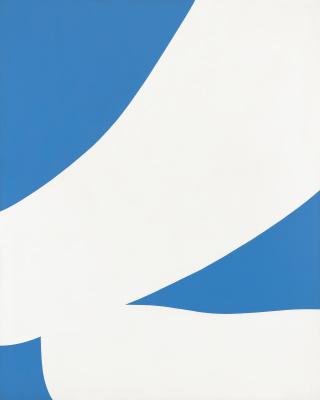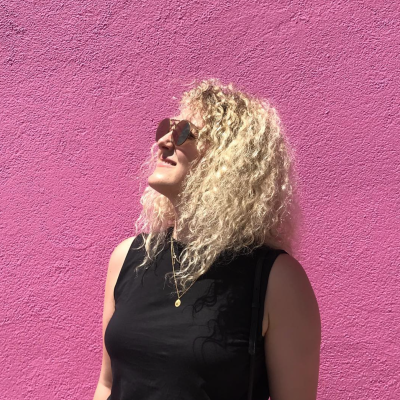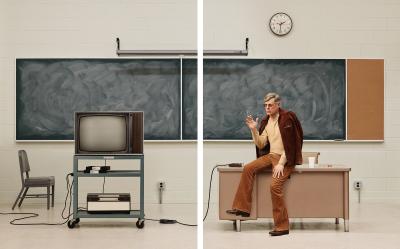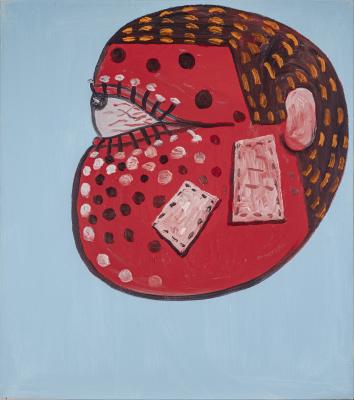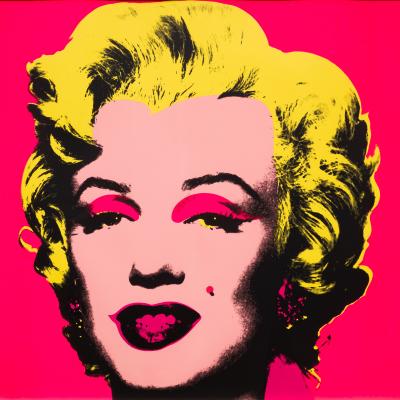Active Looking: Musa Mayer on Philip Guston
AGO hosts acclaimed author, advocate and president of The Guston Foundation, as part of Light Years: The Phil Lind Gift
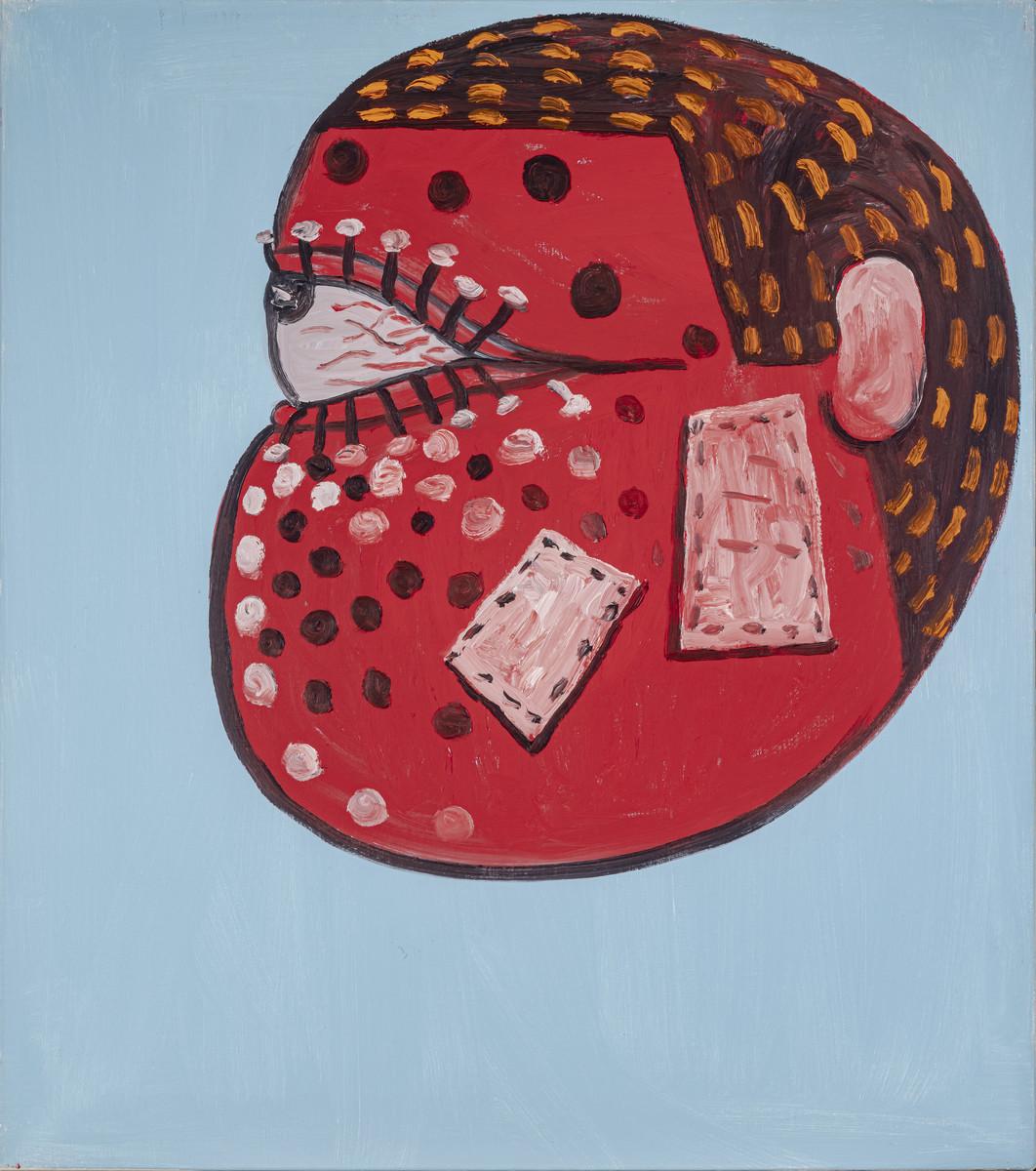
Philip Guston, Untitled, 1979. Oil on canvas, 91.4 × 81.3 cm. Art Gallery of Ontario, Gift of the Estate of Philip B. Lind, 2024. 2024/53. © The Estate of Philip Guston, courtesy Hauser & Wirth. Photo: Toni Hafkenscheid.
Daughter of famed Canadian-born, American painter Philip Guston (1913 – 1980), Musa Mayer never set out to be her father’s legacy keeper. Nor was it even her second calling. Renowned for his socially engaged paintings, and an influential member of the post-war New York scene, his work has been both revered and reviled. But thanks to Mayer’s collaborative energy and conviction, it shines bright, from Toronto to Mexico and beyond.
Had she not been the daughter of an artist and a poet, she says, she likely would have been a medical researcher, so strong is her curious nature. She left her first career as a mental health counselor to pursue an MFA from Columbia University in writing. While still a student in 1988, she published her first book, Night Studio: A Memoir of Philip Guston, a widely heralded account of growing up in the New York art world of the 1950s. Less than a year later, she was diagnosed with breast cancer, and became a leading advocate, publishing three books on the subject.
That all changed again when her father's long-term gallerists retired, and she evolved from an invested collaborator to stewarding a foundation into existence. A dynamic force of nature, ahead of her talk with Anders Bergstrom, a Director, Hauser & Wirth on Wednesday, September 10, Foyer had the privilege of chatting with Musa about her father's work on view in Light Years: The Phil Lind Gift and assuming his legacy.
The following has been condensed and edited for clarity.

Musa Mayer, author and president of The Guston Foundation.
Foyer: Did your father ever envision a foundation?
Mayer: My father was close friends with the painter Mark Rothko. Rothko was an artist who was very particular about how he wanted his work displayed and understood. Rothko had formed a foundation prior to his death. And it really was a disaster.
My father, after his first heart attack, when he knew he was potentially mortally ill, was very explicit with me about not wanting a foundation. He didn't want anything like that to happen to him, and so he died without plans for what and who would handle his legacy and his works after his death, but was very explicit about trusting David and Renée McKee, the gallerists who had represented his work for many years. When my father passed away, it was clear that working collaboratively with them was the best for everyone.
They are people of great integrity, whose conviction was that what was best for the artist's legacy was best commercially, and from them I learned a lot. When they retired in 2015, I had already established The Guston Foundation, because it was clear that dealing with his legacy would continue long after I was gone. I needed to make sure that certain projects - specifically, the catalogue raisonné of his paintings and drawings would get done. So now we've been in existence for just about 12 years and we've accomplished a great deal in that time, including our website at PhilipGuston.org, which offers an open listing of all his work, all exhibitions and bibliography, as well as a detailed chronology of his life and all the public collections that own Guston’s work. In 2022, I formalized the gift of 220 paintings and drawings from my personal collection to The Metropolitan Museum of Art in NYC, which was very important, ensuring that some of his best work would always be on view in the city where he lived and worked.
Your father was born in Montreal, and we’re so proud to claim him as a Canadian artist. Did he have any lingering attachments?
The family moved to Los Angeles when he was around six years old. I think he and my mother once drove to Montreal to see if she could find where his family had lived. But I don’t have a written record of it. The retrospective in Ottawa however, Philip Guston: Paintings of Four Decades (2000) went on to travel internationally, and I remember the Canadian pride that it generated.
Your father is so deeply associated with the New York art world, and yet he (and by extension you and your family) lived all over - Iowa City, St. Louis, Rome. Did he think of himself as a New York painter?
He always resisted labels. His connections to New York were in the 50’s and the early 60’s. So out of a 50-year career, we're only talking about a 15-year period that he was based in New York, and even then, he was spending the warmer months of the year upstate in Woodstock, which is where I am now, in their home.
What always sticks in my mind was something he exclaimed about being called a member of the New York School. “What do they think?" He said. “That we’re a baseball team?”
I think he was drawn to New York in 1949, because it was a very exciting place to be – it was the birth of American abstraction as a legitimate force in the world. But did that have to do specifically with New York City? Maybe, because he and his peers gathered together there. They had friendships and shared a studio building. There was a time of intense community until there wasn't – and it was a relatively short time.
His identification with New York really has to do with the artistic and intellectual community of people who were working there, and it wasn't only the painters, it was also the writers, the critics, the poets, all of those whom my father met in New York. They formed a rich part of his intellectual life, but because my father was so gregarious by nature and loved to talk ideas with people who were his intellectual equal, it was also a distraction from what was happening in the studio. And so, in some ways, his time in the Midwest and in Woodstock gave him the seclusion that he needed to really work. It's no accident that after 1967, after he left New York City and built a new studio in Woodstock, he created two-thirds of his paintings, and, more specifically, the late figurative work for which he is now best known.
Was he sanguine about the ways that his work was received? Was he able to put his finger on what led to the varying receptions of his work?
I don't really think he lived long enough to really see the influence and admiration the late work engenders now. That was just beginning to happen in the last two, three years of his life. I mean, there were exceptions. The McKees hosted seven solo shows of his work during the 1970s, and they were always critically trashed, but always filled with younger painters and artists who were fascinated by what they saw.
It's really only in retrospect that you can see the profound influence my father's late work had. Not only on loosening the stranglehold that the purist abstract critics like Clement Greenberg or Hilton Kramer and others had on art at that time, but it seems like my father was one who really gave permission to young painters to paint whatever they felt deeply and explore figuration again in all of its dimensions. And that's something that now, 45 years later, is still flourishing. Young and now middle-aged artists are always coming up to me and saying how important my father has been to them, not only in his work, but as a heroic figure who pursued his own instincts, rather than bending to praise.
Did he see himself as a member of a vanguard, as somehow a leader?
No, he never thought of himself as part of a movement. He always resisted that idea. To be frank, he was not really looking at or thinking about the painting of his own time, or his contemporaries. When he was thinking about painting, it was generally the early modernists - de Chirico, Picasso, or Italian Renaissance painting.
Your mother – the late Musa McKim - was also a painter, before she dedicated herself to poetry. Did your parents have a common artistic vision?
They did collaborate on murals in the 1940s and he illustrated a number of her poems during the 1970s. His intellectual companions were almost all poets. Sometimes fiction writers, occasionally critics and art historians. Irving Sandler and Harold Rosenberg were close friends of his. But he really loved the way poets responded to his work, and he was close with a number of them.
My mother kept careful journals of some of the key events of their lives and of their travels, and I am preparing to publish them in early 2026. I think Life with P. is going to be a wonderful book, heavily illustrated, really reflecting her sensibility during that time.
Thanks to the generosity of collector Philip Lind, the AGO currently has thirteen works by your father on view. Are we right to read Untitled (1979) as a self-portrait?
Anders Bergstrom was kind enough to bring Phil Lind up to Woodstock with his wife, so I did get a chance to meet him. I don't always meet collectors, but what a charming man. He spent the day, and we shared a meal together, and he wrote me a lovely note after that visit. I know Anders was very fond of him.
That painting is a kind of self-portrait; the bloodshot eyes and bandages harken back to the hooded figures. He often displayed himself with bandages, as if to indicate his wounds. But there's a fanciful quality to this. The marcelled hair and the eyelashes – like a Venus flytrap, with the bead of syrup suspended at the end of each hair. It’s a unique and fantastic work.
The impetus for self-portraiture, did he ever talk about it? Do you have a sense of where that came from?
There's a quote somewhere. I’m paraphrasing, but he said an artist only paints two things. He paints the world, or he paints himself, right? I think he saw self-portraiture as among the great subjects of art. I remember him taking me to see that wonderful Rembrandt self-portrait at the Frick Museum in New York.
He painted the world and did not shirk from showing the horrors of the world, certainly, and some of the beauty of the world. But he also painted the impact of the world on himself. The self is really the authentic subject of any creative person. It is all you can really, really know in depth, and if you are unsparing with your vision, with your perception of yourself, you just reveal so much. That's my feeling about it. My father would say he was self-involved, but that doesn't quite capture the depth to which he examined himself. I've inherited that too, that need to explore self deeply.
In collaboration with Anders Bergstrom, you’ve been curating exhibitions of your father's work. In 2022, there was an online exhibit, at the height of COVID, and in your text, you wrote, “what comfort it was to know that emotions are shared – that others before us have felt as we feel, at different points in time and in differing circumstances.” Does seeing our father's work give you that reassurance of shared emotions?
I do not think I can really look at his work objectively. There are just some works that speak to me very deeply, and others that I recognize more aesthetically or art historically. But I try, when looking at my father's work, to preserve an innocent eye, as I know he did as well. In January, the Guston Foundation, in collaboration with the Mexican Government, completed the conservation of the Moralia mural, The Struggle Against Terrorism, and I pulled up a chair in front of it. It is huge, 40 feet tall. So, I sat as far back as I could get and just sat there and looked for a couple of hours and just took it in. And that's what I do with work that I feel is resonant. It is such an amazing work for a young man at 21 to have done.
In his lifetime, did he ever imagine that the mural would come back?
I do not ever remember him even talking to me about that mural. He was always occupied with what he was working on at the moment. Once he was finished with a work, it was not on his mind.
The mural restoration was a project that would never have been completed without Sally Radic, our executive director, who is fluent in Spanish. Mexico has conservators, being one of only two countries in the world where frescos are plentiful in public places, who are experts. The work was severely damaged, and the wall was full of humidity; it needed to be stabilized before the art could be restored. It was Sally who pushed through the paperwork and mobilized support. I think my father had some sense of the damage, but it was so long ago, he probably didn't think about it at all.
*****
Book your ticket here to see Musa Mayer in conversation at the AGO with Anders Bergstrom, a Director, Hauser & Wirth, New York, on Wednesday, September 10 at 7 pm. See the artistry of Philip Guston on view now as part of Light Years: The Phil Lind Gift on Level 2 of the AGO.
Light Years: The Phil Lind Gift exhibition programming generously supported by:
Debra & Barry Campbell
Maxine Granovsky Gluskin & Ira Gluskin
Rosamond Ivey
Michael & Sonja Koerner
Michelle Koerner & Kevin Doyle
Steven & Lynda Latner
Liza Mauer & Andrew Sheiner
Gordon & Janet Nixon
Jay Smith & Laura Rapp
Jack Weinbaum Family Foundation
The Michael Young Family Foundation

